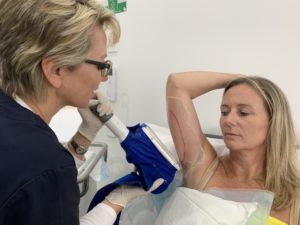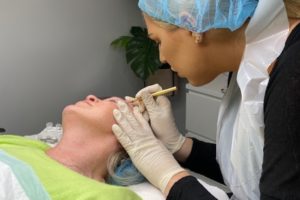Have you ever been curious as to how your anti-wrinkle treatment was discovered?
Settle back for a brief history lesson……

Despite its glamorous connotations, you may be surprised/shocked to discover that it all started with a bad snag. True story!
Let’s travel back to the C19th….. If you were unlucky enough to have lived in a small village in southern Germany in the early 1800’s and had consumed some uncooked blood sausages you may have found yourself as part of a momentous discovery in the medical world! Over half of the people who became ill died. The ensuing investigation began the first accurate and complete descriptions of the symptoms of food-borne botulism and the idea of it’s muscle paralysing properties in a therapeutic setting.
At this stage crude terms such as “sausage poison” or “fatty poison” were used to describe the toxin.
Fast track to the end of the C19th, again in Europe at a funeral dinner in a small Belgian village people fell ill and died after becoming paralysed. This time smoked ham was the culprit! A professor of Bacteriology isolated the toxin, naming it Clostridium Botulinum. This reflected its pathological association with the word ‘sausage’. The Latin word for sausage is botulus.
Despite it’s early discovery it wasn’t until 1944 that the 900kD type A neurotoxin was isolated and purified from a culture of Clostridium Botulinum. Soon after, injecting botulinum toxin type A into overactive muscles blocked the release of acetylcholine, the chemical in the body that causes muscles to contract, inducing temporary paralysis of the targeted muscles. From here it began to be used by Ophthalmologists to inject patients with strabismus (cross-eyes) and blepharospasm ( involuntary and uncontrolled blinking) successfully.
Fun Fact: it was during this time that patients remarked on their “smooth face” on the side that was being treated. No more lines! Hence the cosmetic application of Botulinum toxin type A originated.
Fast forward to today…. it is now used across many specialties including Neurology, Urology, Ophthalmology, Adult and Paediatric Rehab, Dermatology for example to treat many muscle related conditions, torticollis, cerebral palsy, post-stroke spasticity, hemi-facial spasm to name but a few. Sensory conditions such as Chronic Migraine and Over-active Bladder are also both successfully treated using botulinum toxin type A.
Research is still on-going to discover new applications for this wonder drug.
So what’s for dinner? Sausages???!!!
Author: Annabelle May is the Client Liaison at Hannah Aesthetics. Before that she was Senior Business Manager – Neurosciences for Allergan



